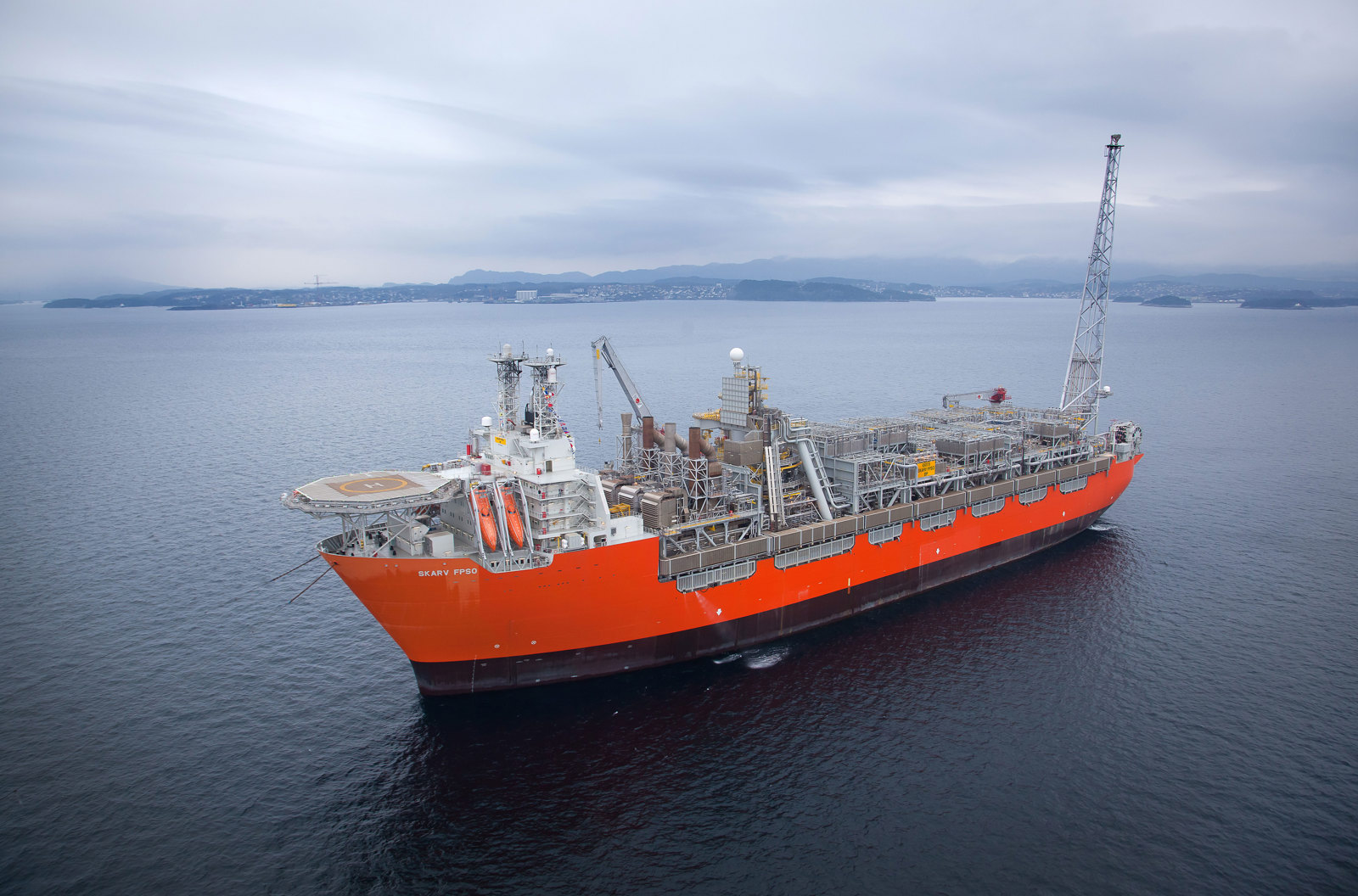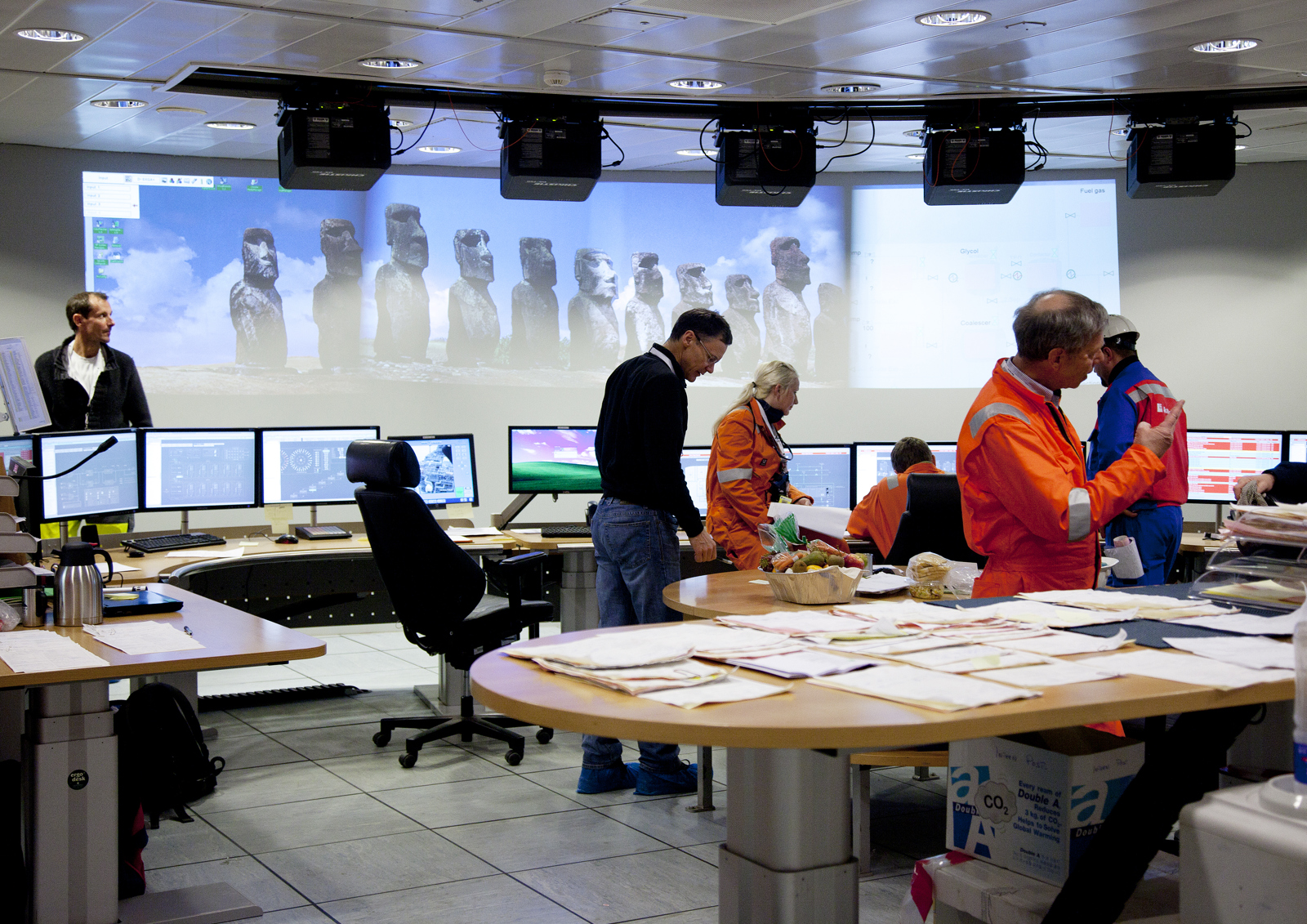
When the world's largest gas treatment ship, Skarv from BP, starts production at the Skarv field in 2011, systems supplied by Kongsberg Maritime will provide full control and monitoring of the entire vessel.
-
Text:CHRISTINA FJELLSTAD
-
Ove Ronny HaraldsenGroup Communication Manager
When BP’s 100 metre long and 50 metre wide FPSO Skarv arrived at quay at Aker Solutions on the island of Stord in April 2011, the vessel had sailed no less than 15,424 nautical miles on its 90-day long voyage from Samsung Heavy Industries in South Korea, where the hull and topside systems were installed. At the Stord quay, the ship received a final polish before sailing out to the Skarv field in the Norwegian Sea, where it is to produce and store oil and gas for a period of 25 years.
FULL PICTURE EQUIPMENT
With a production capacity of 15 million standard cubic metres of gas and 80,000 barrels of oil per day, in addition to a storage capacity of 875,000 barrels of oil, BP’s new vessel is the largest FPSO in the world. It has 100 individual cabins over 13 decks with reversible beds and can cater for 125 persons when required. While the ordinary crew will be made up of around 45 persons, scheduled maintenance periods will require around 70-80 persons on board and up to 100 during scheduled turnarounds. Materials and equipment for Skarv have been supplied from at least 20 different countries by different suppliers such as Aker Solutions, Vetco, Technip and Dresser. Among these suppliers is Kongsberg Maritime, who have supplied the control and monitoring systems on-board.

“This is one of the most important projects for Kongsberg Maritime and has required participation from a number of our departments. It has really been a Full Picture project, according to the best traditions within KONGSBERG. The technology we have supplied has already been expansively tested, but the size and complexity of the project presented an additional challenge,” explains Per Hægstad, Senior Project Manager for automation at Kongsberg Maritime.
TOUGH CLIMATE
Production start-up is scheduled for the third quarter of 2011. The Skarv field, discovered by BP in 1998, is located on the Haltenbanken bank, around 50 km north of the Polar circle and 220 km west of the Norwegian coast. The conditions here are widely recognised as extremely harsh, with waves up to 30 metres in height and winds of up to 40 metres per second. In order to ensure that the vessel remains in position, irrespective of extreme weather conditions, FPSO Skarv has been fitted with KONGSBERG’s thruster control system. Moreover, KONGSBERG has supplied security and information management systems, process and subsea control systems and electrical and marine systems.
“KONGSBERG has played a hand in all the equipment on-board the FPSO which involves control and monitoring, from heating and ventilation , process control of subsea systems, to the ship’s movement and power station. It is hugely beneficial for the customer to have a major integrated control and monitoring system which covers the entire ship,” explains Mr. Hægstad.

Skarv has been specially designed to withstand a tough climate. The turret based anchoring system allows anchoring at depths of up to 450 metres, corresponding to the maximum depth at the Skarv field. The turret construction allows the FPSO to rotate around its anchor according to wind direction and current. The vessel has 15 anchor lines comprising chain and wire. These have a lifetime of 8 times the vessel’s 25-year service time. That makes a lifetime of 200 years!
The FPSO is designed to withstand a total blackout, even in a 100- year storm. If there is a power failure, the mooring fittings will be able to withstand a load of more than 5000 tons. FPSO or Floating Production, Storage and Offloading is a floating platform utilised by the oil and gas industry offshore to process and store petroleum during production at a field.